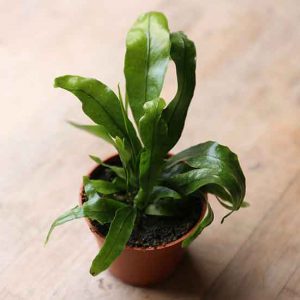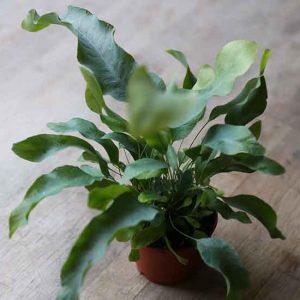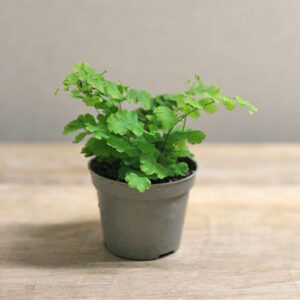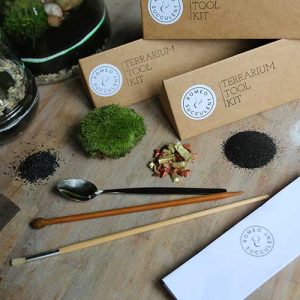HOW TO CARE FOR YOUR ASPLENIUM NIDUS (BIRD'S NEST FERN)
THE BIRD’S NEST FERN
Asplenium nidus. Common Varieties: Crispy Wave / Osaka / Antiquum / Victoria
The Bird’s Nest Fern is so named for its intricate tangle of fronds that cascade from a cosy central rosette, imitating the structure of a tropical bird’s nest. The large and shapely fronds are similar to banana leaves and are usually a rich, deep green colour, depending on the exact variety you go for. Whether looking to acquire a free-standing houseplant, or a plant to include in a DIY terrarium, one of these pretty little ferns could be the perfect fit.

Where Does It Come From?
Native to tropical southeast Asia, eastern Australia, Hawaii, Polynesia, India, and eastern Africa, this adaptable little guy thrives in almost all tropical climates and can survive either as a terrestrial plant or as an epiphyte (a plant that grows off-ground, upon other plants). This fern often grows on palm trees in the wild and collects water in the centre of its foliage rosettes.
Why Should I Get One?
- Although the foliage of these ferns itself is quite delicate, they are hardy plants and are extremely resistant to pest and disease problems that can affect fussier ferns.
- Versatility! These excellent tropical shrubs can thrive in free-standing pots or in an enclosed terrarium. However you prefer to keep your plants, this fern can thrive.
- Bird’s Nest Ferns come in multiple varieties with a gorgeous range of foliage shapes and tones to choose from.
How Big Can It Grow?
Healthy plants in the wild that generally grow on the surface of other plants can often achieve fronds that are up to 5-feet long. Kept as a houseplant, the maximum size is a little more modest – a frond length of around 2-feet is the average. These plants are moderate growers and work extremely well in a terrarium due to their love for humidity. They are also easy to keep as cute miniatures if you simply keep them in a limited container and trim regularly.
Where Should I Keep It?
The plant is native to tropical forests where it frequently has to compete with larger, taller plants for enough light. This means that when kept as a houseplant, this species prefers indirect light and can thrive in partial to full shade. For optimum health, keeping the plant in a humid, warm space is preferable. Bathrooms, utility rooms and kitchens are often compatible with ferns for this reason. The humidity generated by cooking, showering and drying washing can help to maintain moist conditions for the plants to thrive in. These plants react badly to getting cold and dry, so humidifiers, warmth generators and pebble trays are accessories that can help you achieve good growth.
How Often Should I Water It?
These ferns need a consistently high level of soil moisture and we would recommend watering generously three or four times a week. Water the plant whenever the top inch of the pot soil appears dry and try and avid placing the water onto the plant itself. Overloading the rosette with water can lead to mould. Good drainage is important for these plants as they are susceptible to root rot. A soil that is loose but rich in organic matter tends to work best for them. A balanced liquid fertiliser diluted to half-strength applied once per month from April through to September can help achieve optimum growth. Do not overfeed the plants as it can cause browning and foliage abnormalities for these delicate little guys.
Whether you’re hoping to mix it up a little in your terrarium, or introduce some lush potted vegetation to brighten a living space up, these impressive ferns are not too demanding, and certainly bring a taste of the tropics to your home.
-
Quick View
Baby Bird’s Nest Fern (Asplenium Nidus)
Baby House Plants, Ferns, Mini Terrarium Plants, View All £6.00 -
Quick View
Mini Blue Star Fern (Phlebodium Aureum)
View All, Mini Terrarium Plants, Ferns, Baby House Plants £5.50 -
Quick View
-
Quick View
Terrarium Tool Kit
Lifestyle: Gifts, Kits & More, Soil, Grit + Gravel, Terrarium Moss, Decor + Tools, View All £10.00




